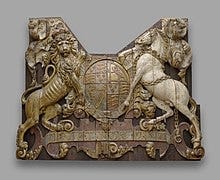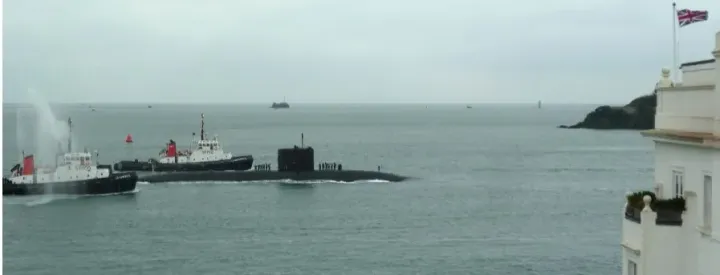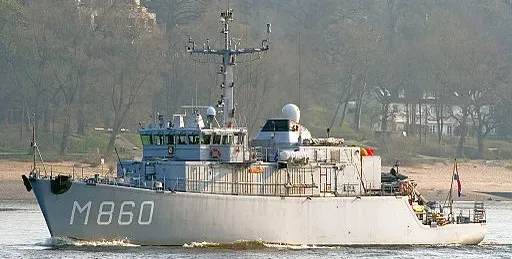Air defence and command frigate HNlMS De Ruyter in the Sound

There is another foreign naval ship in the Sound this week. His Netherland Majesty’s Ship (HNlMS) De Ruyter. She is, I am sure, also here to conduct training with Flag Officer Sea Training (FOST) based in HMS Drake.
HNlMS De Ruyter is an air defence and command frigate. She is comparable in role and capability to the Royal Navy’s Type 45 destroyers [1] (HMS Daring etc.), although about 25% smaller. The layout of both classes is very similar – a gun forrard, mainly for shore bombardment and then a bank of vertical launch silos for the missile system. De Ruyter carries the American Standard SM-2 system for long-range air defence, backed up by the evolved Sea Sparrow for closer ranges. HMS Daring and her sister ships have the European PAAMS system with longer & shorter-range variants of the Aster missile. Both classes use basically the same long range air detection radar (the large black aerial on the after mast) – originally the Dutch Thales SMART-L and called the S1805M or Type 1046 in RN service.
De Ruyter’s anti-ship capability is provided by up to 8 US Harpoon missiles, mounted by the funnels and she carries the Dutch Goalkeeper 30mm CIWS [2] for anti-missile self-defence (visible above on top of the ship’s helicopter hangar). Goalkeeper is significantly more expensive than the RN & USN’s Phalanx CIWS, but having a ring of 30mm cannons, rather than Phalanx’s 20mm, has a longer range & therefore is more effective in the last ditch anti-missile role. Her flight deck is considerably smaller than the Type 45’s, so she can only operate the smaller naval helicopters, like the RN’s Wildcat.
Admiral Michiel de Ruyter (1607-1676), who the ship is named after, was a very successful Dutch Admiral who defeated the Royal Navy on several occasions during the three Anglo-Dutch wars of the second half of the 17th Century – including the 1667 Raid on the Medway, when the British Flagship, HMS Royal Charles was captured. The Royal crest from HMS Royal Charles’s stern is still in the Rijksmuseum in Amsterdam.

Nowadays the Royal Netherlands Navy & the Royal Navy work very closely together – probably more closely than any other navy in the world. The UK Netherlands Amphibious Force is prime example of this, being a fully integrated unit formed of personnel from the Royal Marines and the Korps Mariniers (their Dutch equivalents).
[1] The type designations vary from nation to nation. For the RN, destroyers are now primarily air defence ships, whilst frigates are primarily anti-submarine.
[2] Close in Weapon System



